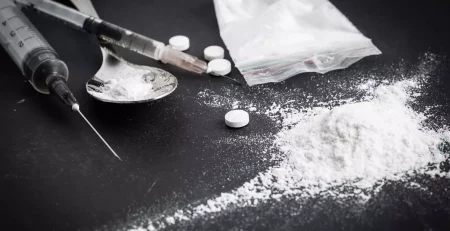P2P Meth: The Rise of Super Meth
Methamphetamine use has long been prevalent in the U.S. It has been a significant contributor to the still ongoing drug abuse epidemic in the country. As the opioid epidemic and overdose deaths continue to rise in the U.S. over recent years, methamphetamine or meth has become one of the primary culprits behind the rising numbers.
However, studies and surveys show some discrepancies in their reports. Although both methamphetamine use and meth-related overdose deaths have gone up, trends show that the rising overdose fatality rate is much more dramatic. This suggests that individuals who use methamphetamine are exposed to a much higher overdose risk than before.
One likely driving force behind the increased risk is the emergence of a new form of meth — one that is more dangerous than before: P2P meth.
Keep reading to find out more about this toxic new form of meth and how Icarus Behavioral Health can help you overcome crystal meth once and for all!
Immediate Help For Meth Addiction
Methamphetamine and Its Dangers
Methamphetamine, also known as crystal meth or speed, is an incredibly strong and highly addictive stimulant. It is a synthetic drug developed from amphetamine and typically used as a party drug.

Compared to its parent drug amphetamine, meth produces stronger effects. Moreover, since the drug can be synthesized or manufactured illegally, it became easier to get ahold of — which eventually led to the current meth epidemic.
Meth primarily affects the brain and leaves potentially long-lasting and harmful effects on the central nervous system. As a stimulant, it can increase your wakefulness, energy, and physical activity. It can also induce an intense high or feelings of euphoria.
However, meth use and abuse cause a multitude of adverse effects, such as:
- Rapid heart rate
- Irregular heartbeat
- Increased blood pressure
- Hyperthermia or hot flashes
- Decreased appetite
- Dizziness
- Blurred vision
- Convulsions
When abused over a long period, meth use can lead to mood swings, violent behavior, memory problems, and brain damage. In many cases, methamphetamine use has led to overdose and death.
What Is P2P Meth?
Phenyl-2-propanone or P2P meth is also referred to as the “new meth” or even “super meth.”
This type of methamphetamine is made using a different production method. Instead of using ephedrine and pseudoephedrine as the primary precursors or ingredients, P2P meth is manufactured using phenyl-2-propanone and methylamine. This results in an entirely different chemical makeup from regular ephedrine-based methamphetamine.
History of P2P Meth
Although branded as the “new meth” in news reports and articles, P2P is technically not an entirely new iteration of the drug. In fact, it is most likely older than many current drugs.
P2P meth was first developed during the 1970s or around the same time that the meth epidemic first blew up. This was also around the time that amphetamine was reclassified as a Schedule II drug.
In response to this, biker gangs and other small-scale producers developed methamphetamine. Initially, the drug was first made using P2P and methylamine. However, the illegal manufacturers switched to ephedrine and pseudoephedrine after the government classified phenylacetone as a Schedule II drug and restricted its access. This led to the production and spread of ephedrine-meth using what is known as the ‘Birch method’ or ‘Nazi method’ that extracts methamphetamine using more commonly sourced precursor chemicals.
As time passed, ephedrine-meth became the standard or regular type of methamphetamine. By the 2000s, almost all meth manufactured, distributed, and used in the U.S. was ephedrine meth.
In an attempt to curb the meth epidemic, the government pushed legislation that made it difficult for meth producers to source ephedrine and pseudoephedrine, especially in large quantities. With the precursors for meth restricted, illicit laboratories had to find a “new” way to continue meth production.
They turned to the original, nearly forgotten method to create methamphetamine: using phenyl-2-propanone.
How P2P Meth Is Produced

The original method to produce P2P meth yields lower-quality meth and less product in general. However, in the face of no product at all, it more than served as an adequate alternative.
The production method follows the same principles and steps as ephedrine-based meth. The only real difference is the substances used as precursors. This causes a change in the chemical makeup of meth.
In lieu of ephedrine, new meth has the following as its principal chemicals:
- Phenyl-2-propanone
- Aluminum
- Methylamine
- Mercuric chloride
Since phenylacetone, which was originally used to create P2P methamphetamine in the seventies, has been classified as a Schedule II substance, manufacturers found new ways to refine and make the old technique work.
They found new precursors, many of which were chemicals found in everyday toiletries, solvents, cleaners, and even racing fuel. They used the following compounds and toxic chemicals to create the new meth:
- Acetone, also known as propanone
- Lye
- Mercury
- Sulfuric acid
- Hydrochloric acid
- Nitrostyrene
- Cyanide
Methamphetamine produced using phenyl-2-propanone yields two distinct isomers or components. These are the d-isomer and l-isomer. These essentially make up two different forms of meth, depending on the prevalent isomer:
- D-methamphetamine. This form has a higher concentration of the d-isomer, which produces the intense high or euphoria you feel.
- L-methamphetamine. This form has more l-isomers, which is what triggers the physical symptoms or effects, such as rapid heart rate and other more toxic effects.
Illicit meth contains both d- and l-isomers. However, these also tend to have more d-isomers, which is why they generally induce enhanced highs. P2P meth, in particular, contains heavy concentrations of the d-isomer, leading to even more intense highs and psychological effects.
Addiction Treatment Helpline – Call Now!
The Spread of New Meth
The return to this old meth manufacturing method led to a steep rise in the drug’s production, distribution, and use. Switching to P2P not only allowed illegal manufacturers to continue making the drug but also to increase its purity and reduce its costs — which contributed to its increased accessibility.
According to the Drug Enforcement Administration (DEA), around 69% of meth samples collected domestically in late 2010 were all made using the P2P method. In just two years, that number went up to 94%.
In the following years, from 2015 to 2019, a study shows an almost three-fold increase in overdose rates due to methamphetamine. During the same period, the DEA also reported an increase in both purity and potency of the drug. Purity reached 97.2% while potency was 97.5% in 2019, up from 95.6% and 86.7%, respectively, during the first half of 2015.
Moreover, data from the Betty Ford Center shows there has been a 56% uptick year over year in patients diagnosed with and treated for stimulant use disorder from 2018 to 2019.
The Dangers of P2P Meth

One of the biggest differences with P2P meth is the intensity of its effects and the increased risks it brings.
Essentially, using P2P meth gives you a markedly more intense high. It still stimulates your central nervous system and gives you excess energy. Instead of prompting you to stay up and socialize, though, P2P meth is more likely to induce a desire to isolate.
More importantly, many P2P meth users have reported experiencing or developing severe mental illness. This includes psychosis, violent paranoia, hallucinations, and delusions. Experts have noted that P2P meth causes significantly worse and longer mental impairment. Chronic or prolonged use of the drug may also lead to massive memory loss.
Aside from a higher risk of severe mental illness and other neurological side effects, P2P meth may also cause a sharp decline in your physical health. Even short-term use of P2P meth can notably cause liver failure.
Meth Addiction Treatment – Reach Out Now!
Symptoms and Side Effects of P2P Meth
The symptoms and side effects that P2P meth users experience are similar to regular ephedrine-based meth. These include:
- Heightened blood pressure
- Rapid heart rate or irregular heartbeat
- Increased respiratory rate or faster breathing
- A temporary spike in energy
- Mood swings or disturbances
- Intense anxiety and paranoia
- Aggression
- Hallucinations
If you notice any of these symptoms and side effects being exhibited by your loved ones or yourself, it is best to act promptly and seek medical treatment.
Seek Meth Addiction Treatment in New Mexico

Icarus Behavioral Health is a premier addiction treatment facility in New Mexico. Our facilities provide highly specialized behavioral health services for anyone looking to recover from drug use, whether it is methamphetamine or other drugs.
Aside from helping you recover from substance use problems, our facilities are also equipped to help you in managing mental health disorders.
We offer both inpatient or residential treatment and intensive outpatient services. Our medical professionals provide comprehensive care that is tailored to your specific needs. We create a customized path to healing for each client to help ensure full and lasting recovery.
If you or a loved one is struggling with meth addiction or requires mental health care, Icarus Behavioral Health is here to help. Reach out now to learn more about our treatment programs!











